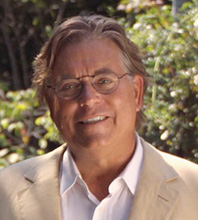
In 1990, when Dallas was going through its great economic depression, it actually had a chance to have more than just backyards and trees. It had a chance to have a version of New York’s Central Park. Southland Corporation had assembled 200 acres one small lot at a time. After the devastating economic downturn, this land became available to purchase for just pennies on the dollar. The City of Dallas had the opportunity to purchase this land for a few million dollars, about the current price of a 150 ft x 175 ft Highland Park lot. At the time, I suggested the City of Dallas purchase this property and just put a fence around it, allowing a natural habitat for birds, pollinators and wildlife to emerge. Once a vibrant economy returned to Dallas, the city could then decide if this natural habitat should be groomed, enhanced or made available for use by people. This natural habitat park would have been linked by the planned Haskell Boulevard Park to Fair Park. As is often the case, the private sector understood the value of the land and location more than the public sector and investors bought the property and have gradually developed Cityplace over the last 25 years.
While Dallas lost the opportunity in 1990 to set aside a natural habitat for birds, flowers, trees and wildlife, Dallas should not lose the existing quilt of natural backyard habitats found in the older neighborhoods that surround Cityplace where mature trees still stand and birds and wildlife flourish.
Landscape architect Kevin Sloan recently wrote in the Dallas Morning News that if one out of four homeowners rewilded just a 5 ft x 5 ft patch of yard, it would create 1,000 acres of natural habitat in Dallas. This would help make up for the decision made by Dallas not to buy the land that is now Cityplace, which caused 200 acres of potential natural habitat to be replaced by development. Presently, a much more significant decision regarding the natural habitat faces Dallas. If the Dallas ADU ordinance goes forward and just one in four homeowners builds a 1,200 square foot backyard ADU/rental house, 64,000 acres of mature trees and habitat for birds, pollinators and wildlife will be wiped out. Many more thousands of acres of natural habitat will be lost by the addition of concrete pads and driveways necessary for the second families that will inhabit the backyard additional dwelling units. When there is a shortage of natural habitat in Dallas, there should be a concerted effort to encourage the preservation and rewilding of backyards, not to add more density to the backyards of homes. Cardinals should be able to continue to glide from one backyard to another. Pollinators should be able to fly from one patch of flowers to the next. Cooper’s hawks should be able to continue to hunt over this patchwork quilt of natural habitat. In Dallas the backyards of older neighborhoods is our Central Park.
Adding density to a city is good when it is placed in areas in need of development or redevelopment. Density is harmful when it replaces the mature trees and natural habitats of our older neighborhoods that add texture and life to our community.


